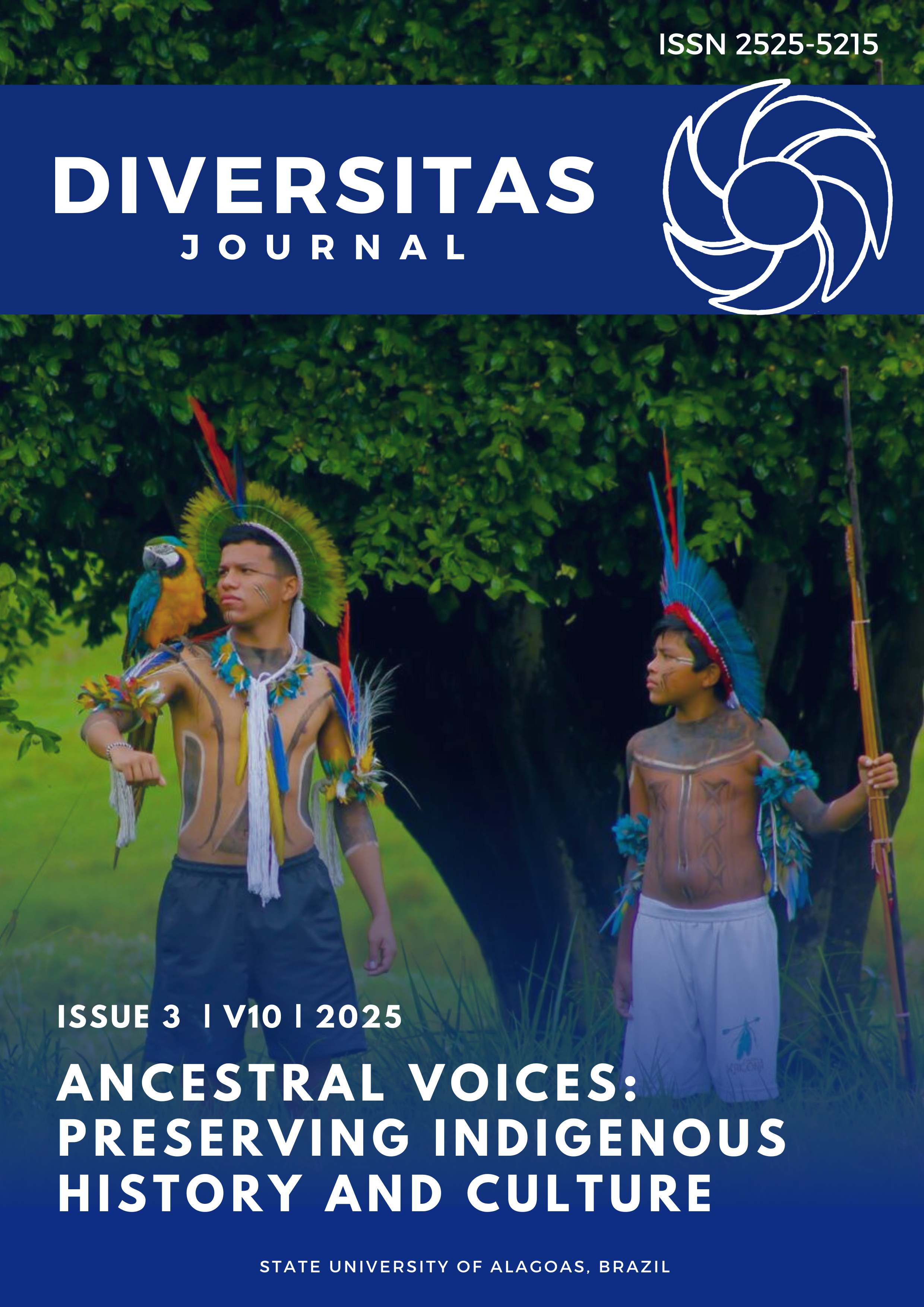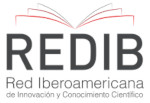Efectos de los Juegos Tradicionales Filipinos en la Comprensión Conceptual de la Física de los Estudiantes de Secundaria
English
DOI:
https://doi.org/10.48017/dj.v10i3.3510Palabras clave:
Aprendizaje Basado en Juegos, Comprensión Conceptual, Juegos Tradicionales Filipinos, Pedagogía Culturalmente Receptiva, Enseñanza de la FísicaResumen
Este estudio desarrolló, validó e implementó juegos de física contextualizados culturalmente que integran juegos tradicionales filipinos (Laro-ng-Lahi) como herramientas instruccionales para mejorar la comprensión conceptual de los estudiantes en física. Guiado por un diseño de investigación en tres fases —desarrollo, validación e implementación—, el estudio produjo cinco actividades de aprendizaje basadas en juegos alineadas con las Competencias Esenciales Más Importantes (MELCs) del Departamento de Educación y evaluadas conforme a los estándares del Sistema de Gestión y Desarrollo de Recursos de Aprendizaje (LRMDS). Los expertos evaluadores calificaron altamente los materiales en cuanto a calidad de contenido, formato, organización y precisión, mientras que los comentarios de los estudiantes afirmaron su claridad, atractivo y valor pedagógico. Un diseño cuasi-experimental con preprueba y postprueba en un solo grupo reveló una mejora estadísticamente significativa en el rendimiento de los estudiantes, pasando de “Bajo Dominio” a “Casi Dominio Completo” después de la intervención. Estos hallazgos sugieren que los juegos de física basados en Laro-ng-Lahi ofrecen un enfoque práctico y culturalmente receptivo para la enseñanza de las ciencias. Investigaciones futuras podrían ampliar el diseño y la aplicación de estos juegos a otros niveles escolares y dominios científicos, particularmente en la enseñanza de la física en la educación secundaria.
Métricas
Citas
Aguado, D. (2012). The traditional Filipino street games are alive in the Philippines. Retrieved: September 27, 2023, from http://dickieaguado.wordpress.com/2013/10/03/the-traditional-filipino-street-games-arealive-in-in-the-philippines/
Alsalhi, N., ... et al. (2022). Educational games embedded with visual representations enhance learners’ conceptual clarity. Journal of Educational Multimedia and Hypermedia, 31(3), 245–262.
Angell, C., Ø. Guttersrud, E. Henriksen, and A. Isnes (2004). Physics: frightful, but fun. Pupils' and teachers' views of physics and physics teaching. Science Education, 88(5).
Arslan, M. M., & Eraslan, L. (2003). Yeni eğitim paradigması ve Türk eğitim sisteminde dönüşüm gerekliliği. Milli Eğitim Dergisi, 160
Boyraz, C., & Serin, G. (2016). Teaching of force and motion concepts through game-based physical activities at elementary level. Trakya Üniversitesi Eğitim Fakültesi Dergisi, 6(1), 89–101.
Brundage, C., Meltzer, D. E., & Singh, C. (2024). Investigating student understanding of work, internal energy, and heat in introductory thermodynamics. Physical Review Physics Education Research, 20(1), 010115. https://doi.org/10.1103/PhysRevPhysEducRes.20.010115
Creswell, J. W., & Plano Clark, V. L. (2018). Designing and conducting mixed methods research (3rd ed.). SAGE Publications.
Department of Education. (2019). Statement on the Philippines’ Ranking in the 2018 PISA Results. Available from: https://www.deped.gov.ph/2019/12/04/statement-on-the-philippines-ranking-in-the-2018-pisa-results
Efthimiou, C., Llewellyn, R., Maronde, D., & Winningham, T. (2006). Physics in Films: an assessment. arXiv preprint physics/0609154. Retrieved May 18, 2012, from: http://arxiv.org/ftp/physics/papers/0609/0609154.pdf
Folashade, A., & Akinbobola, A., O. (2009). Constructivist problem-based learning technique and the academic achievement of physics students with low ability level in Nigerian secondary schools. Eurasian Journal of Physics and Chemistry Education, 1(1), 45–51.
Gestiada, R. J., Tisoy, F. J., & Lasala, N. J. (2025). The 360˚ view: Contextualized virtual reality tours as innovative teaching tool in ecology for elementary school students. Journal of Basic Education Research, 6(1), 23–36. https://doi.org/10.37251/jber. v6i1.1213
Hewitt, P. (2014). Conceptual Physics. 15th ed. New Jersey, United States: Pearson Education Prentice Hall.
Ivankova, N. V., Creswell, J. W., & Stick, S. L. (2006). Using mixed-methods sequential explanatory design: From theory to practice. Field Methods, 18(1), 3–20. https://doi.org/10.1177/1525822X05282260
Karamustafaoğlu, O. & Coşgun, M. A. (2021). ‘Katı Atıkların Ayrıştırılması' Konusunun Eğitsel Bir Oyunla Öğretimi Hakkında Öğretmen Görüşleri . Uluslararası Beşeri Bilimler ve Eğitim Dergisi , 7 (15) , 69-87 . Retrieved from https://dergipark.org.tr/tr/pub/ijhe/issue/62183/887381
Korsacılar, S., & Çalışkan, S. (2015). The effect of life-based teaching and learning stations method on 9th-grade physics course success and permanence. Mersin University Journal of the Faculty of Education, 11(2).
Kozma, R. B., McGinn, C., & O’Donnell, C. (2015). Designing learner friendly multimedia textbooks. Educational Technology Research and Development, 63(4), 513–531. https://doi.org/10.1007/s11423-015-9394-5
Kurt, S. (2017). ADDIE model: Instructional design. Educational Technology, 1–10. Retrieved from [educationaltechnology.net] Biggs, J. B. (2003). Teaching for quality learning at university (2nd ed.). Open University Press.
Lasala Jr, N. (2024). Effects of Game-Based Activities on Student's Social Skills and Attitudes toward Learning Science. Recoletos Multidisciplinary Research Journal, 12 (1), 181-194. https://doi.org/10.32871/rmrj2412.01.14
Lasala Jr, N. L. (2022). Validation of game-based activities in teaching Grade 7-Biology. Jurnal Pendidikan IPA Indonesia, 11(4), 519-530.
Lasala, N. (2023a). Development and Validation of E-SelfIMo: E-Learning Self-Directed Interactive Module in Earth Science. Recoletos Multidisciplinary Research Journal, 11(1), 85-101. https://doi.org/10.32871/rmrj2311.01.07
Lasala, N., Jr. (2023b). EDUTainment: Effectiveness of game-based activities in teaching ecosystem topics. Recoletos Multidisciplinary Research Journal, 11(2), 69–83. https://doi.org/10.32871/rmrj2311.02.07
Lasala, N. J., Ricafort, J., & Prado, J. (2025a). Effect of E-learning Self-directed Interactive Module (E-SelfIMo) on Students’ Understanding of Earth Science Concepts: English. Diversitas Journal, 10(2). https://doi.org/10.48017/dj.v10i2.3444
Lasala Jr, N., Prado, J., Doringo, N., & Ricafort, J. (2025b). BEsMART: Board Examinations Mobile Application Reviewer for Pre-Service Science Teachers using Space Repetition and Hypercorrection. Pakistan Journal of Life and Social Sciences, 23(1), 7274–7290. https://doi.org/10.57239/PJLSS-2025-23.1.00564
Leech, N. L., & Onwuegbuzie, A. J. (2009). A typology of mixed methods research designs. Quality & Quantity, 43(2), 265–275. https://doi.org/10.1007/s11135-007-9105-3
Loberes, J. M., Jalmasco, A. C., & Lasala, N. J. (2025). Interactive story for teaching ecosystem topics using Twine application for elementary school students: English. J. Basic Educ. Res, 6(2), 66-78.https://doi.org/10.37251/jber.v6i2.1480
Lye, H., Fry, M., & Hart, C. (2002). What does it mean to teach physics ‘in context’: a first case study. Australian Science Teachers, 48(1), 16-22.
Morales, M. (2014). The impact of culture and language sensitive physics on concept attainment. International Journal of Learning, Teaching and Educational Research,
Muresherwa, E., & Jita, L. C. (2022). The value of a pilot study in educational research learning: In search of a good theory-method fit. Journal of Educational and Social Research, 12(2), 221–230. https://doi.org/10.36941/jesr-2022-0047
Orleans, A. (2007). The condition of secondary school physics education in the Philippines: Recent developments and remaining challenges for substantive improvements. The Australian Educational Researcher, 34(1), 33–54.
Ornek, F., W. Robinson, & M. Haugan. (2008). What makes physics difficult? International Journal of Environmental & Science Education, 3 (1), 30 – 34.
Patel, M., & Mathis, C. (2024). Why are culture‑based approaches in physics needed? PERC Proceedings. https://doi.org/10.1119/perc.2024.pr.Patel
REL Appalachia at SRI International. (2025). Learning before going to scale: An introduction to conducting pilot studies (p. 20). [PDF]. Retrieved from [ies.ed.gov]
Rivaldo, R., Basyuni, M., & Siahaan, P. (2020). Analysis of students’ difficulties about work and energy. Journal of Physics: Conference Series, 1462, 012015. https://doi.org/10.1088/1742-6596/1462/1/012015
Saleh, S. (2012). Dealing with the problem of the differences in students’ learning styles in physics education via the brain-based teaching approach. International Review of Contemporary Learning Research, 1(1), 47–56.
Selcuk, G.S. (2010). The effects of problem-based learning on pre-service teachers’ achievement, approaches and attitudes towards learning physics. International Journal of Physical Sciences, 5(6), 711-723.
Singh, C., & Rosengrant, D. (2016). Multiple-choice test of energy and momentum concepts. American Journal of Physics, 71(6), 607–617. https://doi.org/10.1119/1.1571832
Tham, L., & Tham, R. (2012). Blended learning: Is game-based learning an effective instructional strategy to engage students in higher education in Singapore? A Pilot study. Journal of the Research Center for Educational Technology, 8(1), 2-10.
Tural, G. (2013). The functioning of context-based physics instruction in higher education. Asia Pacific Forum on Science Learning and Teaching, 14(1), 1–4.
Wambugu, P. W., & Changeiywo, J. M. (2008). Effects of Mastery Learning Approach on Secondary School Students' Physics Achievement. Eurasia Journal of Mathematics, Science & Technology Education, 4(3).
Wells, R. A., Read, M. F., & Games, D. (2020). Improving student understanding of Newton’s third law using role-playing, peer discussion, and diagramming. Physical Review Physics Education Research, 16(1), 010121. https://doi.org/10.1103/PhysRevPhysEducRes.16.010121
Wilson, M., & Golonka, S. (2013). Embodied cognition is not what you think it is. Frontiers in Psychology, 4, 58. https://doi.org/10.3389/fpsyg.2013.00058
Zähringer, T., Girwidz, R., & Müller, A. (2024). Aesthetic and affective perception of pictures in physics education: a quantitative study. arXiv. https://doi.org/10.48550/arXiv.2411.04779
Descargas
Publicado
Cómo citar
Número
Sección
Licencia
Derechos de autor 2025 Rejohn Besa, Surbano Jhon Dave, Nestor Jr Lasala

Esta obra está bajo una licencia internacional Creative Commons Atribución 4.0.
O periodico Diversitas Journal expressa que os artigos são de unica responsabilidade dos Autores, conhecedores da legislação Brasileira e internacional. Os artigos são revisados pelos pares e devem ter o cuidado de avisar da possível incidencia de plagiarismo. Contudo o plagio é uma ação incontestavel dos autores. A Diversitas Journal não publicará artigos com indicios de Plagiarismos. Artigos com plagios serão tratados em conformidade com os procedimentos de plagiarismo COPE.
A violação dos direitos autorais constitui crime, previsto no artigo 184, do Código Penal Brasileiro:
“Art. 184 Violar direitos de autor e os que lhe são conexos: Pena – detenção, de 3 (três) meses a 1 (um) ano, ou multa. § 1o Se a violação consistir em reprodução total ou parcial, com intuito de lucro direto ou indireto, por qualquer meio ou processo, de obra intelectual, interpretação, execução ou fonograma, sem autorização expressa do autor, do artista intérprete ou executante, do produtor, conforme o caso, ou de quem os represente: Pena – reclusão, de 2 (dois) a 4 (quatro) anos, e multa.”


















